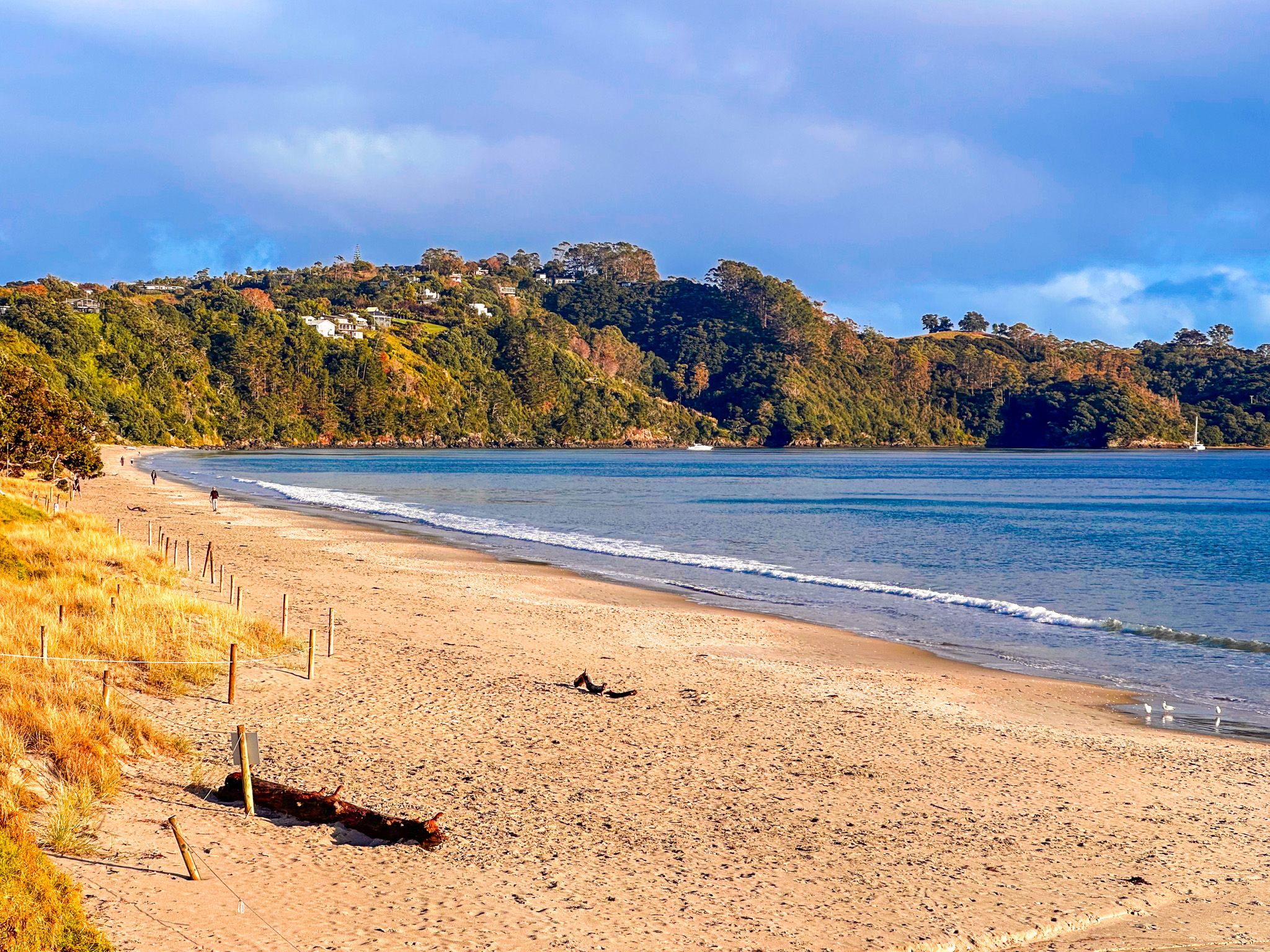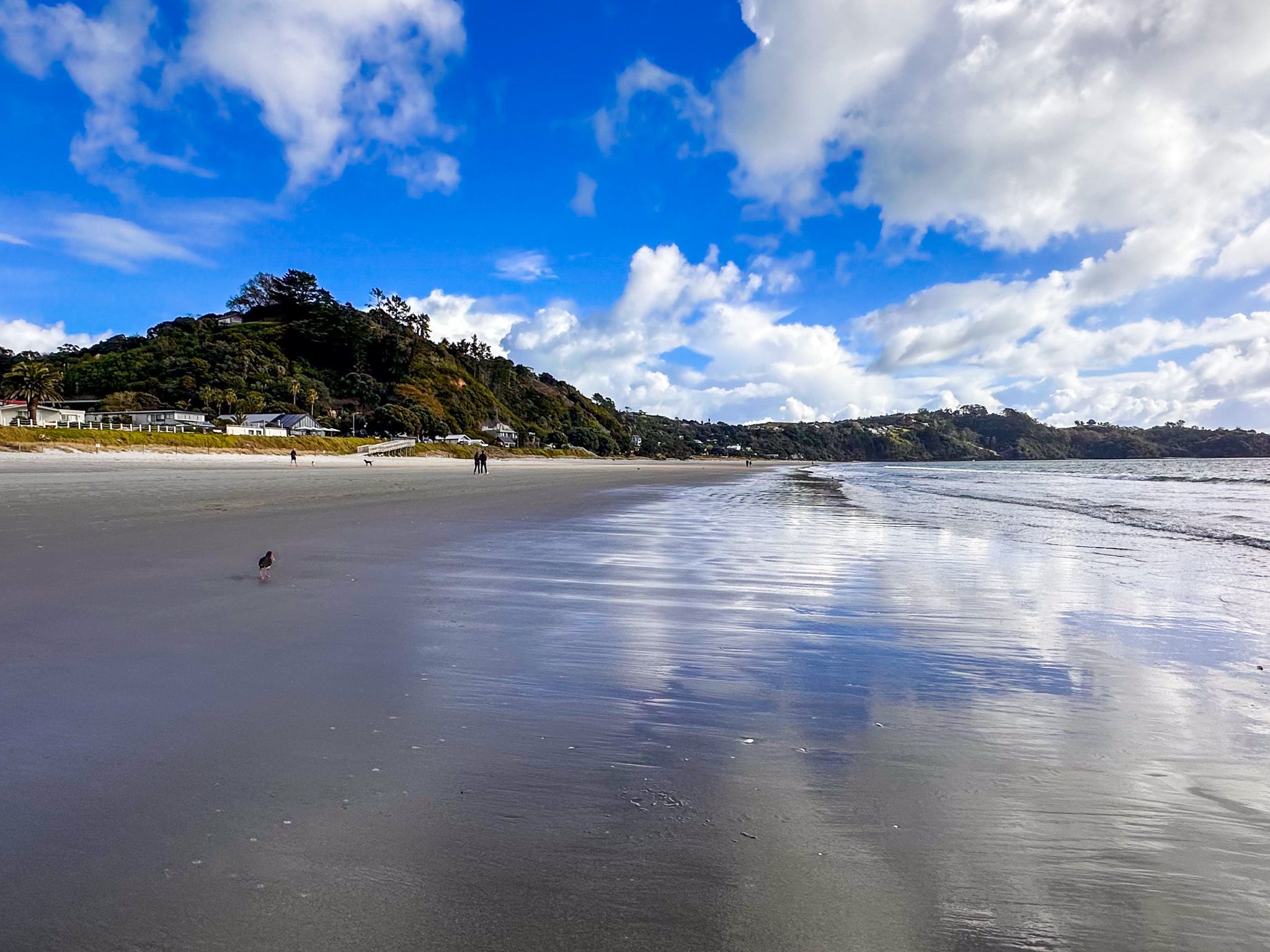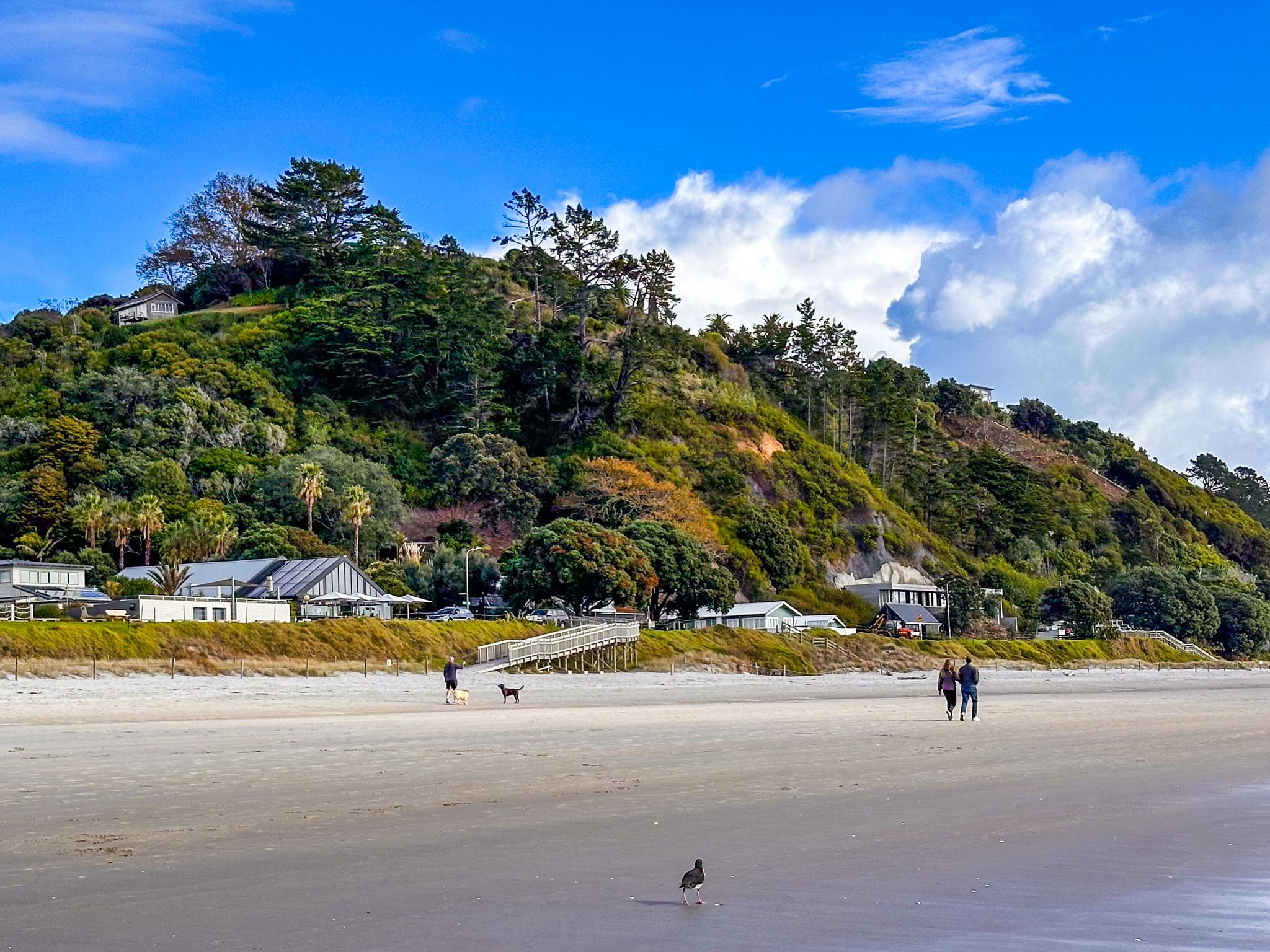Onetangi Beach is Waiheke’s longest beach, with about 2.5 km of north-facing white sand. It is slightly less sheltered than the other north-facing beaches, so it generally has more surf. However, it is safe for swimming and surrounded by mostly steep hills and cliffs. Onetangi is also the name of the suburb that sits behind the beach. The facilities at Onetangi include public toilets, a beach store, and three cafes/restaurants.
The Strand is the main road and is several metres above the beach. There is staircase access in several locations. To get to The Strand, take Fourth Avenue from Onetangi Road and Waiheke Road. Te Ara Hura also enters the west end of the beach from Sea View Road. It runs along The Strand and exits at First Avenue. The ever-present bus service is also an easy way to get to Onetangi.
Onetangi Beach is also the location for the annual Onetangi Beach Races, held in February/ March each year.
Despite its beauty, Ontangi has a tragic connotation, meaning "Weeping Sands" The name arose from a one-sided battle between Ngāpui, led by Hongi Hika, and the local Ngāti Pāoa iwi during the Musket Wars.











